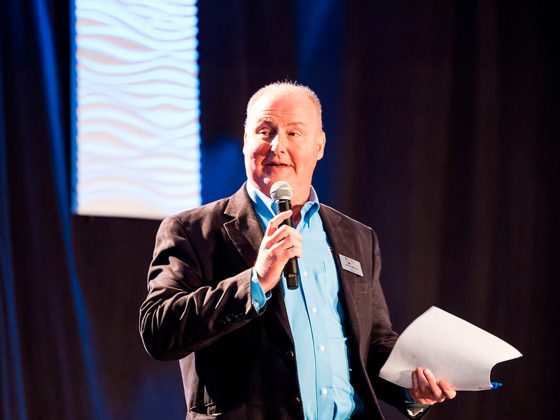Motivating teams is one of the most critical responsibilities of any leader. Effective motivation drives engagement, fosters creativity, and aligns individual efforts with organizational goals. Yet, in today’s dynamic work environment, where employees prioritize purpose, flexibility, and recognition, traditional motivational approaches often fall short. This article explores the art of team motivation, offering actionable strategies to unlock potential and drive success in any organization.
Understanding Motivation in the Modern Workplace
Motivation is no longer solely about monetary rewards or titles. Employees are increasingly seeking roles that provide meaning, growth opportunities, and a sense of belonging. A motivated team doesn’t just work harder—it works smarter, contributing to innovation, collaboration, and long-term success.
For instance, Google’s emphasis on psychological safety within teams—ensuring that employees feel safe to take risks and express ideas—has been a cornerstone of its culture of innovation. When employees feel valued and supported, they are more likely to stay engaged and committed to organizational goals.
The Leader’s Role in Motivation
Leadership is a driving force behind team motivation. A leader’s actions, communication, and decisions set the tone for the team’s energy and morale. Key leadership responsibilities include:
- Setting a Clear Vision: A well-articulated vision aligns team efforts and inspires collective purpose.
- Recognizing Contributions: Publicly acknowledging individual and team achievements reinforces positive behaviors.
- Providing Growth Opportunities: Leaders who invest in professional development create a motivated and future-ready workforce.
A compelling example is Satya Nadella, CEO of Microsoft, who revitalized the company’s culture by emphasizing growth mindset and innovation. Nadella’s leadership not only motivated employees but also positioned Microsoft as a market leader in cloud computing and AI.
Strategies to Motivate Teams Effectively
- Foster Open Communication
Motivation thrives in environments where employees feel heard. Leaders should:- Encourage feedback and suggestions through regular one-on-ones or team meetings.
- Actively listen to concerns and act on them when possible.
- Maintain transparency about organizational goals, challenges, and opportunities.
- Create a Sense of Purpose
Employees are more motivated when they see how their work contributes to a larger mission. Leaders can:- Connect daily tasks to the organization’s broader vision.
- Share stories of how the team’s efforts positively impact customers or communities.
- Align roles with employees’ personal values and career aspirations.
- Recognize and Reward Effort
Recognition is a powerful motivator, whether it’s a simple thank-you, a public acknowledgment during a meeting, or tangible rewards. Consider:- Implementing peer-recognition programs to highlight contributions across teams.
- Offering flexible rewards, such as extra time off or professional development opportunities, tailored to individual preferences.
- Empower Autonomy and Ownership
Micromanagement stifles motivation, while autonomy boosts confidence and innovation. Leaders can empower teams by:- Delegating meaningful responsibilities.
- Trusting employees to make decisions within their roles.
- Providing resources and support rather than dictating every step.
- Encourage Collaboration and Team Spirit
Team motivation often hinges on camaraderie. Leaders should:- Facilitate team-building activities to strengthen relationships.
- Promote cross-functional projects that encourage collaboration.
- Address conflicts promptly to maintain harmony and focus.
Adapting to Individual Motivations
No two employees are motivated in the same way. Leaders who take the time to understand individual preferences and needs can tailor their approaches effectively.
- Personal Development: Some employees value opportunities to learn new skills or take on challenging projects.
- Work-Life Balance: Others prioritize flexibility or benefits that support their personal lives.
- Recognition: Certain individuals thrive on public acknowledgment, while others prefer private praise.
Using tools like personality assessments or simply engaging in open conversations helps leaders identify what motivates each team member.
Overcoming Common Challenges in Motivation
Motivating teams is not without its hurdles. Common challenges include:
- Lack of Resources: Teams may feel demotivated if they lack the tools needed to succeed. Leaders should advocate for the necessary support.
- Misaligned Goals: Confusion around priorities can dilute motivation. Regularly revisiting and clarifying goals ensures alignment.
- Burnout: Overworked employees often lose motivation. Encouraging breaks, promoting work-life balance, and monitoring workloads can help prevent this.
Addressing these challenges proactively keeps motivation high and teams energized.
Case Study: Motivation at Southwest Airlines
Southwest Airlines is renowned for its motivated workforce and customer-centric culture. The company’s leaders prioritize employee well-being, recognizing that happy employees lead to happy customers.
Southwest’s leadership fosters motivation by:
- Creating a fun and inclusive work environment.
- Recognizing employee achievements regularly.
- Empowering teams to make decisions that enhance customer experiences.
This approach has not only driven Southwest’s operational success but also earned it a reputation as one of the best places to work.
Motivating teams is an art that requires intentionality, empathy, and adaptability. Leaders who create a sense of purpose, foster open communication, and tailor their approaches to individual needs unlock the full potential of their teams.
In today’s evolving work environment, where employee expectations are shifting, motivation is more critical than ever. By mastering this art, leaders inspire not only exceptional performance but also loyalty, creativity, and long-term success.
Image Source: Unsplash.com









